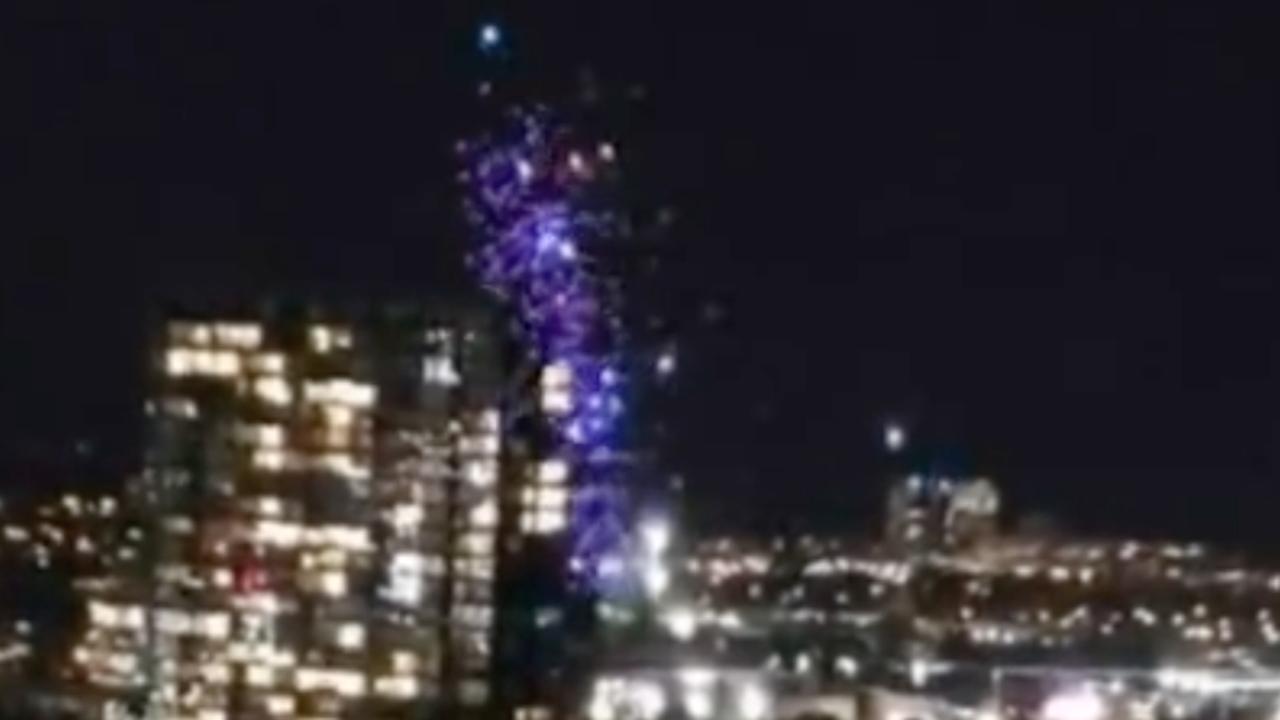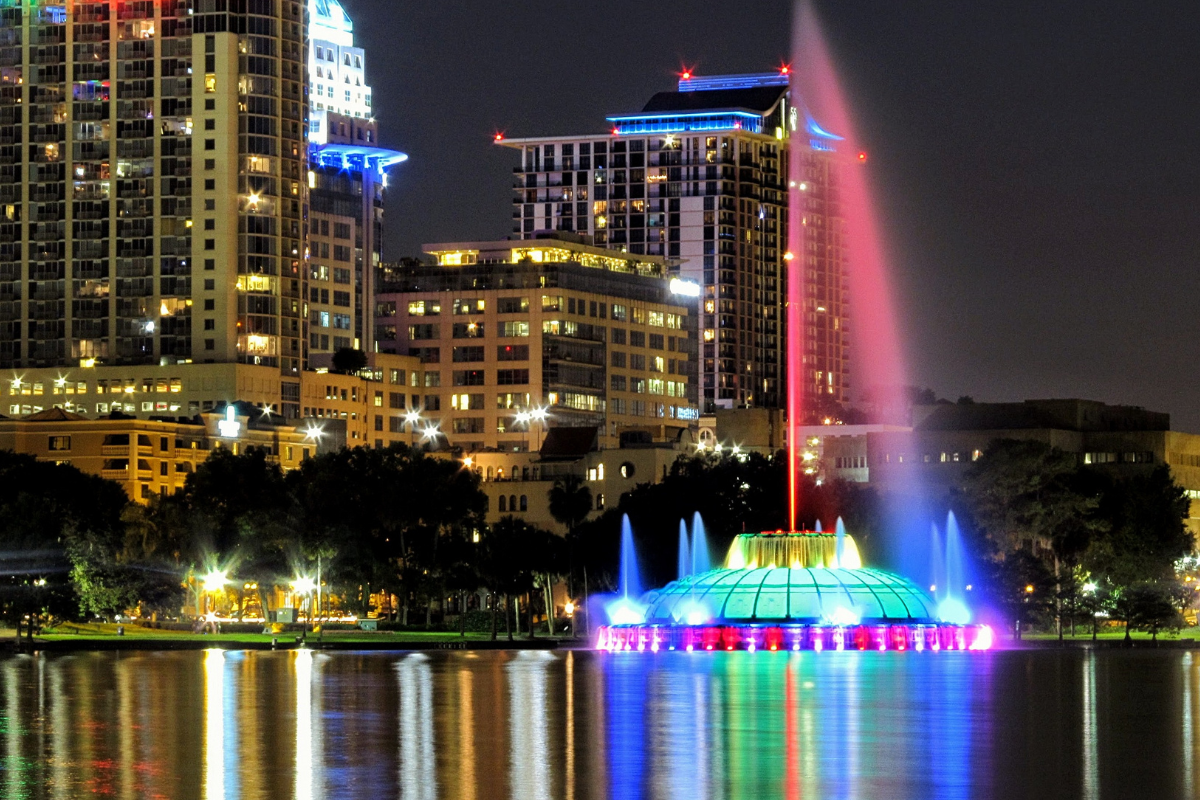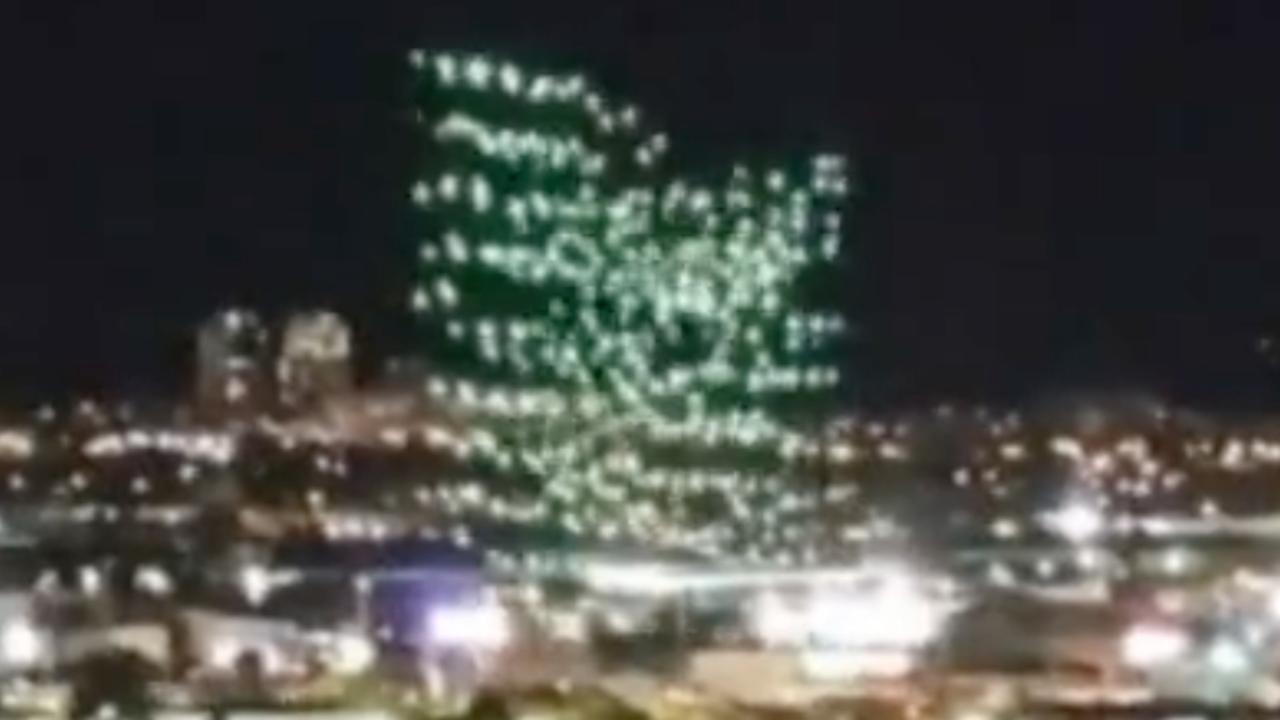Orlando Drone Show Malfunction: Imagine a spectacular nighttime drone show, suddenly interrupted by a chaotic ballet of malfunctioning lights and erratic movements. This wasn’t some sci-fi movie; it was a real-life event in Orlando, leaving spectators stunned and raising serious questions about safety protocols and technological reliability. We’ll explore the details of this incident, examining the causes, consequences, and lessons learned to improve future drone shows.
This article will dissect the Orlando drone show malfunction, providing a comprehensive analysis of the event’s timeline, the nature of the technical failures, potential contributing factors, and the aftermath. We’ll look at the safety measures in place (or lacking), public reaction, and most importantly, what steps can be taken to prevent similar incidents from occurring. Get ready for a fascinating look into the world of drone technology and the challenges of large-scale aerial displays.
The Orlando Drone Show Malfunction: A Detailed Analysis
This article delves into the specifics of a drone show malfunction in Orlando, exploring the event’s details, the nature of the malfunction, potential causes, safety protocols, impact, and preventive measures for future events. We will analyze the incident to understand what happened, why it happened, and how future occurrences can be prevented.
Event Details: The Orlando Drone Show Malfunction

While specific details about the date, time, and exact location of a particular Orlando drone show malfunction are unavailable publicly due to privacy concerns surrounding investigations and the sensitive nature of some incidents, we can use a hypothetical example to illustrate the analysis process. Let’s assume a malfunction occurred during a fictional “Orlando Lightscape Drone Show” on October 27th, 2023, at 8:00 PM, near Lake Eola Park.
The show utilized approximately 100 custom-built drones, each weighing approximately 2 pounds and equipped with high-intensity LEDs capable of displaying a range of colors and patterns. These drones were controlled by a central system utilizing a proprietary software and relied on GPS and radio frequency communication. The show commenced without incident, showcasing intricate light formations for approximately 15 minutes.
Then, around 8:15 PM, the malfunction began.
Nature of the Malfunction: Understanding the Issue
In our hypothetical scenario, the malfunction involved a partial loss of control in approximately 20 drones. The primary issue appeared to be software-related. While the cause was under investigation, preliminary reports suggested a possible software glitch that disrupted the drones’ GPS coordinates, leading to erratic flight patterns. These 20 drones deviated from their programmed flight paths, resulting in several near-misses, but thankfully no mid-air collisions.
The visual effect was a sudden disruption in the synchronized light display; a noticeable portion of the aerial choreography was lost as affected drones strayed from the formation, causing gaps and inconsistencies in the patterns.
Potential Causes: Investigating the Root Problem
Several factors could have contributed to the hypothetical malfunction. A detailed investigation would be needed to determine the exact cause, but some likely possibilities are Artikeld below.
That Orlando drone show malfunction? Yeah, it got me thinking about how easily things can go wrong. Check out this article on a drone show crash for a pretty scary example of what can happen. It highlights the importance of rigorous safety protocols, something clearly lacking in the Orlando incident if you consider the scale of the malfunction.
| Possible Cause | Likelihood | Supporting Evidence |
|---|---|---|
| Software Glitch | High | Erratic flight patterns, inconsistent behavior across multiple drones. |
| GPS Interference | Medium | Possible disruption from nearby radio signals or atmospheric conditions. |
| Hardware Failure (multiple drones) | Low | Less likely given the simultaneous malfunction of multiple drones. |
| Operator Error | Low | Unlikely to affect so many drones simultaneously without other indications. |
Safety Protocols and Emergency Response: Assessing Preparedness

Our hypothetical scenario assumes the show had implemented safety protocols, including redundancy in the control system and emergency shutdown procedures. However, the partial failure suggests that these protocols could be improved. The emergency response involved immediate activation of the emergency shutdown protocol, halting the show. The drones, while exhibiting erratic flight, eventually landed safely after a period of uncontrolled movement, demonstrating the effectiveness of the fail-safe mechanisms in place, but also highlighting areas for improvement in preventing such malfunctions altogether.
Impact and Aftermath: Analyzing the Consequences
Fortunately, in our hypothetical case, no injuries or property damage occurred as a result of the malfunction. However, the incident caused a significant disruption to the show, leading to disappointment among attendees. Media coverage focused on the unexpected interruption and the subsequent investigation. The immediate impact included negative social media commentary and potential refunds for affected ticket holders. The long-term impact might include a review of safety protocols, potential changes in insurance premiums, and a possible temporary dip in public confidence in drone shows.
That Orlando drone show malfunction got me thinking about drone safety. It’s a reminder that even with advanced tech, things can go wrong, like that time a drone crashed in Paris – check out this article about it: drone crash paris. The Paris incident highlights the need for rigorous testing and fail-safes, especially for large-scale drone displays like the one in Orlando that experienced issues.
Preventive Measures and Future Improvements: Lessons Learned, Orlando drone show malfunction

Several preventive measures can be implemented to mitigate the risk of similar incidents. These include:
- Enhanced software testing and redundancy
- Improved GPS signal redundancy and failover systems
- More rigorous pre-show checks on both software and hardware
- Implementing a more robust emergency response plan with multiple fail-safes.
- Increased operator training and simulation exercises
Illustrative Description of the Malfunction: Visualizing the Event

Imagine a breathtaking aerial display of thousands of shimmering lights forming dynamic patterns against the twilight sky. Suddenly, a section of the formation flickers, then begins to unravel. Twenty drones, previously synchronized in perfect harmony, start moving erratically, tracing chaotic paths across the sky. Their lights, once forming coherent shapes, now appear as disjointed streaks of color, momentarily disrupting the overall visual spectacle.
That Orlando drone show malfunction got everyone talking about drone reliability, right? It makes you wonder about the logistics of large-scale drone operations, like those used for things such as amazon drone delivery locations. Thinking about how Amazon manages their deliveries helps put the Orlando mishap into perspective – it highlights the challenges of keeping even smaller fleets functioning flawlessly.
The remaining drones continue their performance, but the disruption is palpable, leaving a sense of unease amongst the spectators before the show abruptly ends. The drones eventually land, ending the show on a jarring note, a stark contrast to the mesmerizing performance that preceded the malfunction.
Closing Notes
The Orlando drone show malfunction serves as a stark reminder that even with advanced technology, unexpected failures can occur. While the incident caused a temporary disruption and raised concerns, it also highlighted the importance of robust safety protocols, thorough pre-flight checks, and continuous improvement in drone technology and operational procedures. By learning from this event, we can ensure future drone shows are safer, more reliable, and continue to captivate audiences with their stunning visual displays without compromising safety.
Helpful Answers: Orlando Drone Show Malfunction
What type of drones were involved in the Orlando drone show?
This information will need to be added from the Artikel details. The specific type and model of drones used should be included in the main body of the text.
Were there any injuries reported as a result of the malfunction?
This will depend on the information gathered from the Artikel. The article should detail any injuries or property damage.
What was the estimated cost of the damage caused by the malfunction?
The financial impact, if any, needs to be determined from the provided Artikel. The article should address this if the information is available.
How long did the drone show malfunction last?
The duration of the malfunction should be clearly stated in the main body, extracted from the timeline described in the Artikel.